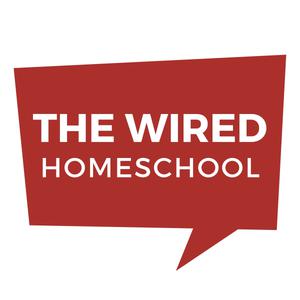
The Wired Homeschool
John Wilkerson
Tech, Tools, & Tips for Homeschooling the Digital Generation
- 14 minutes 18 secondsHow to View the 2024 Total Solar Eclipse
A total solar eclipse that will traverse North America is quickly approaching. Don’t miss this opportunity to see a phenomenon you and your kids will talk about for years. Please note: This podcast episode is from 2017 but I have updated this blog post for the upcoming solar eclipse in 2024.
The best way to see the eclipse in 2024 is to be somewhere along the path of totality that goes from Mexico to Maine. Even if you’re outside this area, you’ll still be treated to a sight unparalleled in all of nature.
Think about it: the moon will pass between the earth and the sun and darkness will engulf you. The stars will be visible at midday!
A short video illustrating why we don’t have an eclipse every month.See the Eclipse in Person
The best way to view the eclipse is to be there in person. For many people in the United States, you can drive 4-6 hours and be along the path of totality.
If you live along that path, or you plan to travel, here are a few tips:
1. Plan Ahead
Don’t wait until the last minute to make plans. Travel will be difficult as the date approaches, especially around major metropolitan areas.
If you want to use this as an opportunity to teach your kids about astronomy, find some books or videos to share with them. You might want to start with my blog post Best Resources for the 2024 Total Solar Eclipse.
2. Be Safe
Whether it’s while traveling or when viewing the eclipse, safety is important. Animals freak out when an eclipse occurs so if you’re in a rural area watch out for strange behavior.
Don’t plan to drive too far on the day of the eclipse. If you need to travel that day be conscious of the fact that many people will be trying to do the same thing.
Make sure you have protective eyewear for viewing the eclipse. DO NOT look directly at the sun until it’s totally covered! Once the sun is covered, you can remove your glasses for naked eye observation.
3. Be Courteous
I recommend that you and your family observe the event alone. If you plan to go to a viewing party be aware of the people around you. Don’t block a person’s view.
If someone has a telescope, DO NOT just walk up and use it. Don’t even touch it without permission. Professional and amateur astronomers are kind and helpful people but touching their equipment without permission is a no-no.

Where to Watch Online
Ideally, you want to see the eclipse in person. However, work requirements, family situations, and other situations out of your control may prevent that.
If you live anywhere in the lower 48 states, you’ll be able to see a partial eclipse. The same safety rules apply when viewing the eclipse. At no point during a partial eclipse is it safe for you to remove protective eyewear.
If it’s cloudy where you are or you live in Alaska or Hawaii or you want to watch the eclipse from overseas I recommend checking out the NASA Live Stream or the SLOOH Live Stream.
Both of these sites will have excellent programming leading up to and on the day of the eclipse. Again, it’s not the best option but it’s better than nothing.
If you received value from this episode, consider supporting the podcast by buying me a coffee. Although the podcast isn’t actively being produced, there are still costs associated with hosting the files and maintaining the website.
Follow the podcast on Apple Podcasts, Spotify, and more.
Music for the podcast is “RetroFuture Clean” Kevin MacLeod (incompetech.com) Licensed under Creative Commons: By Attribution 4.0 License http://creativecommons.org/licenses/by/4.0/
Disclosure of Material Connection: Some of the links in the post above are “affiliate links.” This means if you click on the link and purchase the item, I will receive an affiliate commission. In some cases, I may have been given a free sample of a product to review. I am disclosing this in accordance with the Federal Trade Commission’s 16 CFR, Part 255: “Guides Concerning the Use of Endorsement.
20 June 2023, 9:30 am - 4 minutes 37 secondsSpecial Announcement for New Listeners
If you’re new to the podcast, you might be wondering why I haven’t released an episode. If you’ve been around here for a long time you may want to know what’s going on.
If you want to keep up with me on social media (not the blog/podcast) you can follow me on Twitter and Instagram.
12 October 2021, 2:18 pm - 15 minutes 17 seconds4 Important Things To Do Before Giving Your Child A Smartphone
Are you planning to give your child a smartphone, tablet, or console this holiday season? Before you wrap it (if you haven’t already) consider doing a few things first.
Set Expectations
The number one piece of advice I give parents when buying their child a device is to set expectations. You need to decide what kind of restrictions you’ll put in place and how you want it to be used. Will you limit how often and how long they’re allowed to use it? Will you limit the types of games they’re allowed to play? All of these things should be thought about before you give them the device so you can set their expectations after they receive it.
Device Controls
Nearly every electronic device comes with some form of parental controls. I’ve advocated for them for over 10 years and companies are finally making it easier for parents to manage how, when, and how long their children use their devices.
Screen Time (iOS) – Apple has always had a walled garden so you’ll either need to manage your child’s device directly or use another iOS device. Screen Time has great controls and works well with Family Sharing.
Family Link (Android) If you got your child any smartphone besides an iPhone you most-likely will use Family Link to manage parental controls. Fortunately, they have an iOS app too.
Amazon FreeTime Fire tablets, TVs, and even Alexa-enable devices can be managed with Amazon’s FreeTime. In my experience, Amazon has the weakest controls.
Consoles: The Nintendo Switch and XBox both have dedicated apps that you can use to manage parental controls on their consoles. Sony’s Playstation requires you to use a browser or its general Playstation app.
Network Controls
For whole-house Internet controls you can turn to your router or a secondary device. If you’re using the router your Internet provider installed, check with them for information on parental controls. I suggest either a second router for the kids or Circle by Disney.
Circle Home Plus – The Circle Home Plus device connects with your router to manage every Internet-connected device on your home network.
Home Router – Every home router these days has some level of parental controls. Check your manufacturer’s website for instructions to configure those settings.
Software and Apps
No solution will fully protect you and your children so if you need to take a belt and suspenders approach I recommend installing an app on their device for additional monitoring.
Covenant Eyes – I’ve been an advocate (and affiliate) for Covenant Eyes for over a decade. They’re the gold-standard when it comes to monitoring and filtering.
Accountable2You – If you’re looking for the best bang for your buck, Accountable2You has got you covered. It occasionally triggers false alarms but I’ve still found it to be a useful tool.
If you found value in this episode of The Wired Homeschool, consider a donation that reflects the value you received by buying me a coffee.
Follow the podcast on Apple Podcasts, Spotify, and more.
Music for the podcast is “Loopster” Kevin MacLeod (incompetech.com). Licensed under Creative Commons: By Attribution 4.0 License http://creativecommons.org/licenses/by/4.0/
Some of the links in the posts on this site are “affiliate links.” That means if you click on the link and purchase the item, I receive a commission. I am disclosing this in accordance with the Federal Trade Commission’s 16 CFR, Part 255: “Guides Concerning the Use of Endorsements and Testimonials in Advertising”
16 December 2020, 12:02 pm - 14 minutes 13 secondsMySchool: A Tech Tool for Homeschoolers with Justin Shell
One of the most difficult things for new homeschoolers, and even some experienced homeschoolers, is finding community resources that are friendly to homeschoolers.
MySchool is a community-driven resource that connects parents to homeschool spots (like museums, co-ops, and nature centers). It’s like an Airbnb for home education.
https://www.youtube.com/watch?v=9xivrl8AjLoJustin Shell started MySchool after he and his wife started homeschooling and were looking for locations and activities for their children.
Homeschooling families are encouraged to sign up for MySchool and add “spots” that other homeschooling families could use for learning and social activities.
You can follow MySchool on Twitter, join the Facebook group, or sign-up for their newsletter when you register to keep up-to-date on all their latest developments.
If you found value in this episode of The Wired Homeschool, consider a donation that reflects the value you received by buying me a coffee.
Follow the podcast on Apple Podcasts, Spotify, and more.
Music for the podcast is “Loopster” Kevin MacLeod (incompetech.com). Licensed under Creative Commons: By Attribution 4.0 License http://creativecommons.org/licenses/by/4.0/
Some of the links in the posts on this site are “affiliate links.” That means if you click on the link and purchase the item, I receive a commission. I am disclosing this in accordance with the Federal Trade Commission’s 16 CFR, Part 255: “Guides Concerning the Use of Endorsements and Testimonials in Advertising”
17 November 2020, 5:07 pm - 35 minutes 59 secondsHomeschooling After an Emergency
If you were forced into homeschooling because of an emergency, you may have found that it works well for your family and want to continue.
Maybe you’re not comfortable with how your school district is planning to reopen or you’ve decided that this is something you think is a good fit for your family.
In this episode of The Wired Homeschool my wife Lisa joins me to talk about homeschooling philosophy, curriculum, online resources, and more.
We condense 20 years of homeschooling into a 30-minute episode. Listen in to learn what you need to know if you plan to homeschool after COVID.
Resources mentioned (in order):
Ducksters
Cathy Duffy Reviews
The Great Courses
Khan Academy
Multiflyer
Mark Rober
Cincinnati Zoo
Deep Space Sparkle
Art for Kids Hub
Scouter Mom
Danica McKellar’s Math BooksIf you received value from this episode, consider supporting the podcast by buying me a coffee. Although the podcast isn’t actively being produced, there are still costs associated with hosting the files and maintaining the website.
Follow the podcast on Apple Podcasts, Spotify, and more.
Music for the podcast is “RetroFuture Clean” Kevin MacLeod (incompetech.com) Licensed under Creative Commons: By Attribution 4.0 License http://creativecommons.org/licenses/by/4.0/
Disclosure of Material Connection: Some of the links in the post above are “affiliate links.” This means if you click on the link and purchase the item, I will receive an affiliate commission. In some cases, I may have been given a free sample of a product to review. I am disclosing this in accordance with the Federal Trade Commission’s 16 CFR, Part 255: “Guides Concerning the Use of Endorsement.
19 June 2020, 2:51 pm - 2 minutes 40 secondsEmergency Homeschooling and COVID-19
In 2020, a global pandemic caused many public schools in the United States to shift to remote learning.
Due to these unforeseen circumstances, many parents considered or were compelled to homeschool their children.
For many of these parents, this was an especially stressful time full of uncertainty.
It’s important that we in the homeschooling community do not panic and show kindness and compassion towards each other during these difficult times.If you’re new to homeschooling or if you’re looking for additional resources I’ve listed a few below.
- 7 Online Writing Classes for Homeschoolers
- 10 Educational Shows for Tweens and Teens
- 5 Online Science Classes for Homeschoolers
- Homeschooling With Hulu? 10 Documentaries You Can Watch Now
- Kathy Ceceri has a great article about emergency homeschooling and has also provided some resources.
- HSLDA Quick-Start Guide to Homeschooling
- Coronavirus (COVID-19) and Homeschooling: 5 Things to Consider
If you received value from this episode, consider supporting the podcast by buying me a coffee. Although the podcast isn’t actively being produced, there are still costs associated with hosting the files and maintaining the website.
Follow the podcast on Apple Podcasts, Spotify, and more.
Music for the podcast is “RetroFuture Clean” Kevin MacLeod (incompetech.com) Licensed under Creative Commons: By Attribution 4.0 License http://creativecommons.org/licenses/by/4.0/
Disclosure of Material Connection: Some of the links in the post above are “affiliate links.” This means if you click on the link and purchase the item, I will receive an affiliate commission. In some cases, I may have been given a free sample of a product to review. I am disclosing this in accordance with the Federal Trade Commission’s 16 CFR, Part 255: “Guides Concerning the Use of Endorsement.
13 March 2020, 6:29 pm - 33 minutes 25 secondsNoah Tetzner - Homeschooler to Full-Time Podcaster
About Noah Tetzner
Noah Tetzner is a homeschool graduate who enjoys sharing his passion for history with the world! He is the host of multiple historical podcasts that feature interviews with some of the world’s brightest scholars.
Recently, he has launched a new podcast called Lessons from a Homeschooler where you can join him in learning about topics such as history, education, and literature from acclaimed speakers across the homeschooling world.
Make sure you have a listen to both of Noah’s podcasts: The History of Vikings and Lessons from a Homeschooler.
If you received value from this episode, consider supporting the podcast by buying me a coffee. Although the podcast isn’t actively being produced, there are still costs associated with hosting the files and maintaining the website.
Follow the podcast on Apple Podcasts, Spotify, and more.
Music for the podcast is “RetroFuture Clean” Kevin MacLeod (incompetech.com) Licensed under Creative Commons: By Attribution 4.0 License http://creativecommons.org/licenses/by/4.0/
Disclosure of Material Connection: Some of the links in the post above are “affiliate links.” This means if you click on the link and purchase the item, I will receive an affiliate commission. In some cases, I may have been given a free sample of a product to review. I am disclosing this in accordance with the Federal Trade Commission’s 16 CFR, Part 255: “Guides Concerning the Use of Endorsement.
10 June 2019, 12:30 pm - 17 minutes 11 secondsHow to Homeschool Like Ursula Burns
Ursula M. Burns became the first black woman to head a Fortune 500 company when she was appointed CEO of Xerox. She also became the first woman to succeed another as head of a Fortune 500 company.
Burns led the STEM program of the White House from 2009 to 2016 and is the current chairman and CEO of VEON, the eleventh largest mobile network operator in the world based on subscribers. Burns is also on the board of Uber.
Much like we did with the previous “Homeschool Like” series, we’ll take a look at her business acumen and apply that to homeschooling.
1. Be Authentic.
In an interview with Time, Ursula Burns said in the early years of her career the one thing she would not give up is her hair.
She encourages women, especially women trying to get into STEM to use their uniqueness as an opportunity to distinguish themselves from others.
We need to encourage our children to embrace what’s unique about themselves (being homeschooled) and use that as a way to stand out from the crowd. Don’t look at it as a burden, but an opportunity.
2. Listen to your employees.
Some parents think they have all the answers when it comes to homeschooling. While we are certainly responsible for educating our children, we should listen to them too.
As our children get older, their interests will change and we should be able to tailor their education so that they have a vested interest. We can only do that if we listen to them.
3. Recognize that you can not do everything yourself.
Speaking with Poppy Harlow on CNN Money, Burns reminds men that they need to step up when their wives have a baby. Women shouldn’t have to do all the work of raising children.
The same is true in homeschooling, it’s difficult for one parent to be the only educator. Both parents need to help.
4. Take a stand for what you believe in.
Believe it or not, there are still people out there who think homeschooling is bad for children. Governments, like Brazil and Germany, have basically made it illegal to homeschool.
There may come a time when you need to take a stand for your belief in homeschooling. Be prepared to hold your ground against family, friends, and total strangers.
5. Measure goals and outcomes to make better decisions.
Grades are not goals. test results don’t always reflect the outcomes you’re looking for when educating your children. Book knowledge shouldn’t be the ultimate goal.
In our family, we want to instill a love of learning. We want to equip our children to be successful adults. We also want them to define what success looks like.
6. Have fun and truly enjoy your job to have the most success.
When I hear about parents and children who are burdened by homeschooling my heart drops. Anyone who is homeschooling and doesn’t truly find joy in the process will not have ultimate success.
It brings a smile to my face when I see the joy on my wife’s face when she’s talking about an experiment the kids did or a history nugget she learned about that day.
If you received value from this episode, consider supporting the podcast by buying me a coffee. Although the podcast isn’t actively being produced, there are still costs associated with hosting the files and maintaining the website.
Follow the podcast on Apple Podcasts, Spotify, and more.
Music for the podcast is “RetroFuture Clean” Kevin MacLeod (incompetech.com) Licensed under Creative Commons: By Attribution 4.0 License http://creativecommons.org/licenses/by/4.0/
Disclosure of Material Connection: Some of the links in the post above are “affiliate links.” This means if you click on the link and purchase the item, I will receive an affiliate commission. In some cases, I may have been given a free sample of a product to review. I am disclosing this in accordance with the Federal Trade Commission’s 16 CFR, Part 255: “Guides Concerning the Use of Endorsement.
30 March 2019, 10:43 am - 12 minutes 13 secondsHomeschooling With Hulu? 10 Documentaries You Can Watch Now
Educational content is available all over the Internet. As streaming services become more popular, more educational documentaries become available to homeschoolers.
Previously, I’ve shared YouTube channels and documentaries on Netflix that are educational. In this episode of The Wired Homeschool, I share 10 documentaries you can find on Hulu right now that you can use for homeschooling.
The list reflects my leaning towards science and technology (especially, space) but you can find other interesting educational content on Hulu that covers topics like humanities, finances, and history.
Updated 3/16/2020 — Since the release of the podcast, some of the titles mentioned in the recording are no longer available. I’ve substituted the missing titles with the current ones.
Drugs, Inc.

Drugs: A multibillion-dollar industry that fuels crime and violence like no other substance on the planet. Turning cartel leaders into billionaires, the illegal drug industry also provides vital income to hundreds of thousands of poor workers across the globe. Rating: TV-14. Watch now.Mythbusters

The MythBusters, Adam Savage and Jamie Hyneman, two special effects experts with more than 30 years of experience, methodically set out to bust urban legends. Rating: PG. Watch now.What on Earth

Some images caught by satellites in space defy explanation: massive tsunamis that disappear, a sinister blood-red lake in war-torn Baghdad and a whirlpool in the ocean the size of a state asking experts, analysing the sites on the ground ‘What on Earth’. Rating: TV-PG. Watch now.Above and Beyond: NASA’s Journey to Tomorrow

Directed, produced, and narrated by Academy Award®-nominated and Emmy®-winning Rory Kennedy, the film examines the ways NASA has changed not only our vision of the universe, but also our planet, and ourselves. Running time: 90 minutes. Rating: NR. Watch nowApollo 11

Crafted from a newly-discovered trove of 70mm footage, and more than 11,000 hours of uncatalogued audio recordings, Apollo 11 goes straight to the heart of NASA’s most celebrated mission. Rating: G. Watch now.
Lo and Behold: Reveries of the Connected World

Oscar®-nominated documentarian Werner Herzog (Grizzly Man, Cave of Forgotten Dreams) chronicles the virtual world from its origins to its outermost reaches. Rating: PG-13. Watch nowRBG

An intimate portrait of an unlikely rock star: Justice Ruth Bader Ginsburg. With unprecedented access, the filmmakers explore how her early legal battles changed the world for women. Rating: PG. Watch now.How It’s Made

How It’s Made shows viewers how many of the everyday objects we seldom stop to think about become the things they are. Viewers will be amazed to see the process of how many common items are manufactured in high-tech factories around the world. Running time: 22 minutes per episode. Rating: TV-G. Watch now.Revolt

In this documentary series, we explore the future of energy in America’s Heartland and how that will shape the future of our climate. Running time: 11-15 minutes. Rating: NR. Watch now.Zero Days

A black ops cyber-attack launched by the U.S. and Israel on an Iranian nuclear facility unleashed malware with unforeseen consequences. The Stuxnet virus infiltrated its pre-determined target only to spread its infection outward, ultimately exposing systemic vulnerabilities that threatened the very safety of the planet. Delve deep into the burgeoning world of digital warfare in this documentary thriller from Academy Award® winning filmmaker Alex Gibney. Running time: 114 minutes. Rating: R. Watch now.If you received value from this episode, consider supporting the podcast by buying me a coffee. Although the podcast isn’t actively being produced, there are still costs associated with hosting the files and maintaining the website.
Follow the podcast on Apple Podcasts, Spotify, and more.
Music for the podcast is “RetroFuture Clean” Kevin MacLeod (incompetech.com) Licensed under Creative Commons: By Attribution 4.0 License http://creativecommons.org/licenses/by/4.0/
Disclosure of Material Connection: Some of the links in the post above are “affiliate links.” This means if you click on the link and purchase the item, I will receive an affiliate commission. In some cases, I may have been given a free sample of a product to review. I am disclosing this in accordance with the Federal Trade Commission’s 16 CFR, Part 255: “Guides Concerning the Use of Endorsement.
30 January 2019, 9:04 am - 30 minutesGetting Devices Ready for Giving with Michael Prince
Michael Prince from BecauseFamily joins me again to discuss safe digital parenting.
With the holidays just around the corner, you’ll want to make sure any gifts you’re giving to your kids are safe and ready to use when they’re unwrapped.
Michael and I talk about some of the things you’ll want to do before handing a pocket-computer over to your kids this Christmas.
Resources
iOS 12’s Screen Time App Changes Everything!
The Best Way to Keep Your Kids Safe On Youtube
Circle With Disney Whole-House Device Management
Accountable2You – Accountability Software
Bark – Monitor Your Kid’s Online ActivityIf you received value from this episode, consider supporting the podcast by buying me a coffee. Although the podcast isn’t actively being produced, there are still costs associated with hosting the files and maintaining the website.
Follow the podcast on Apple Podcasts, Spotify, and more.
Music for the podcast is “RetroFuture Clean” Kevin MacLeod (incompetech.com) Licensed under Creative Commons: By Attribution 4.0 License http://creativecommons.org/licenses/by/4.0/
Disclosure of Material Connection: Some of the links in the post above are “affiliate links.” This means if you click on the link and purchase the item, I will receive an affiliate commission. In some cases, I may have been given a free sample of a product to review. I am disclosing this in accordance with the Federal Trade Commission’s 16 CFR, Part 255: “Guides Concerning the Use of Endorsement.
30 November 2018, 10:00 am - 43 minutes 17 secondsDave Stotts – Drive Thru History AdventuresAbout Dave Stotts and Drive Thru History Dave Stotts has spent the last two decades in professional video and media production. His career in documentary production has taken him to30 October 2018, 8:00 am
- More Episodes? Get the App
Your feedback is valuable to us. Should you encounter any bugs, glitches, lack of functionality or other problems, please email us on [email protected] or join Moon.FM Telegram Group where you can talk directly to the dev team who are happy to answer any queries.
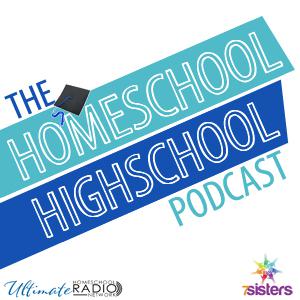 The Homeschool Highschool Podcast
The Homeschool Highschool Podcast
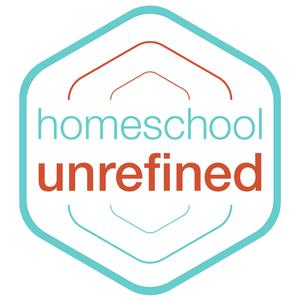 Homeschool Unrefined
Homeschool Unrefined
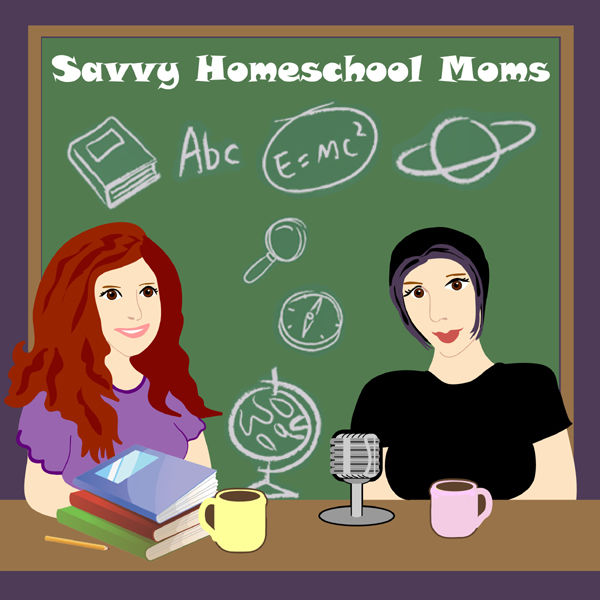 Savvy Homeschool Moms podcast
Savvy Homeschool Moms podcast
 The Homeschool Sanity Show
The Homeschool Sanity Show
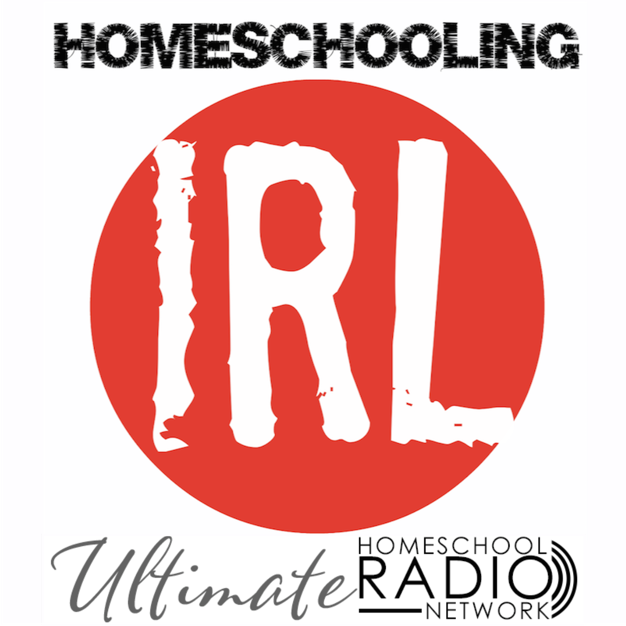 Homeschooling IRL
Homeschooling IRL